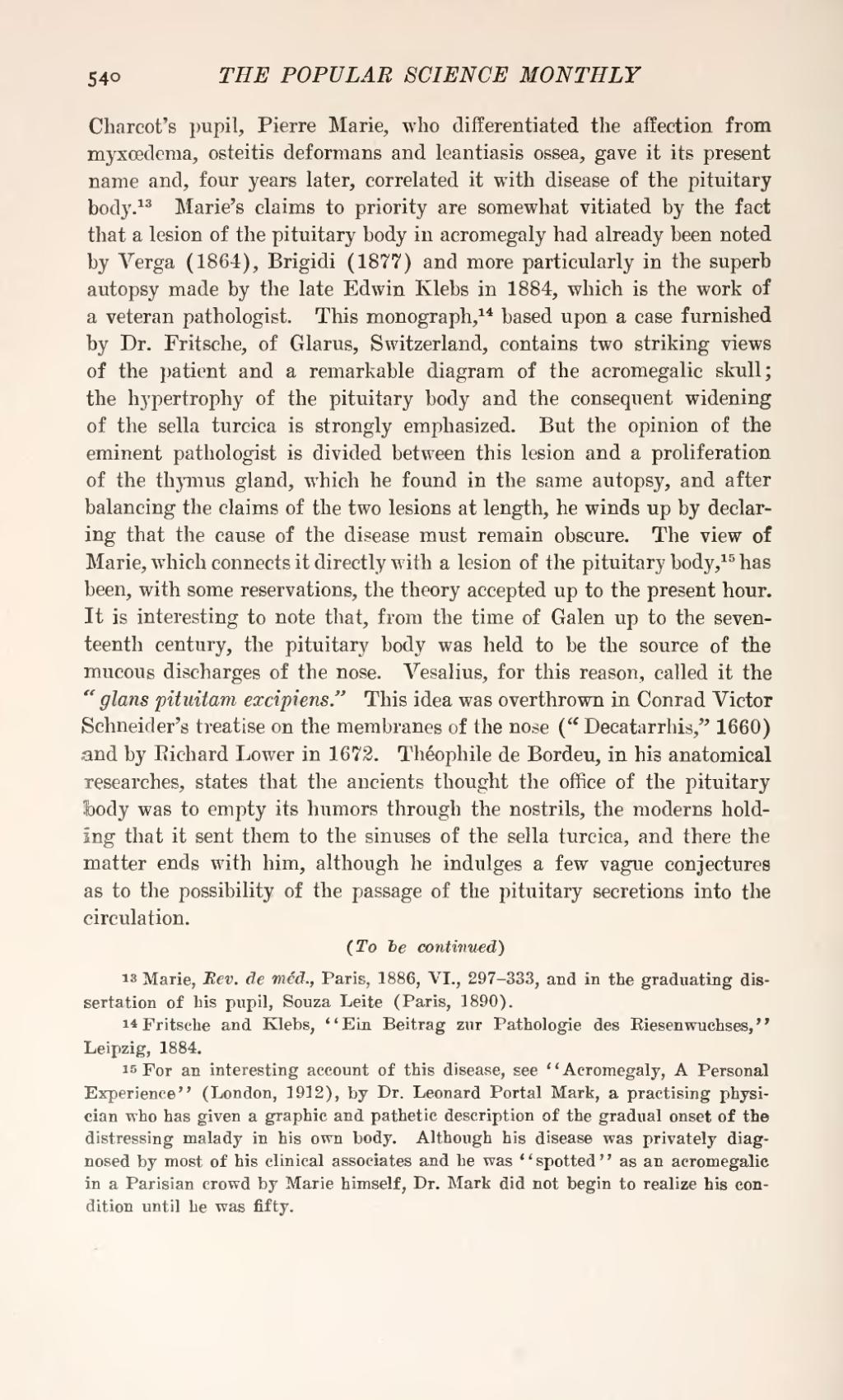Charcot's pupil, Pierre Marie, who differentiated the affection from myxcedema,osteitis deformans and leantiasis ossea, gave it its present name and, four years later, correlated it with disease of the pituitary body.[1] Marie's claims to priority are somewhat vitiated by the fact that a lesion of the pituitary body in acromegaly had already been noted by Verga (1864), Brigidi (1877) and more particularly in the superb autopsy made by the late Edwin Klebs in 1884, which is the work of a veteran pathologist. This monograph,[2] based upon a case furnished by Dr. Fritsche, of Glarus, Switzerland, contains two striking views of the patient and a remarkable diagram of the acromegalic skull; the hypertrophy of the pituitary body and the consequent widening of the sella turcica is strongly emphasized. But the opinion of the eminent pathologist is divided between this lesion and a proliferation of the thymus gland, which he found in the same autopsy, and after balancing the claims of the two lesions at length, he winds up by declaring that the cause of the disease must remain obscure. The view of Marie, which connects it directly with a lesion of the pituitary body,[3] has been, with some reservations, the theory accepted up to the present hour. It is interesting to note that, from the time of Galen up to the seventeenth century, the pituitary body was held to be the source of the mucous discharges of the nose. Vesalius, for this reason, called it the "glans pituitam excipiens." This idea was overthrown in Conrad Victor Schneider's treatise on the membranes of the nose ("Decatarrhis," 1660) and by Richard Lower in 1672. Théophile de Bordeu, in his anatomical researches, states that the ancients thought the office of the pituitary ibody was to empty its humors through the nostrils, the moderns holding that it sent them to the sinuses of the sella turcica, and there the matter ends with him, although he indulges a few vague conjectures as to the possibility of the passage of the pituitary secretions into the circulation.
(To be continued)
- ↑ Marie, Rev. de méd., Paris, 1886, VI., 297-333, and in the graduating dissertation of his pupil, Souza Leite (Paris, 1890).
- ↑ Fritsche and Klebs, "Ein Beitrag zur Pathologie des Riesenwuchses," Leipzig, 1884.
- ↑ For an interesting account of this disease, see "Acromegaly, A Personal Experience" (London, 1912), by Dr. Leonard Portal Mark, a practising physician who has given a graphic and pathetic description of the gradual onset of the distressing malady in his own body. Although his disease was privately diagnosed by most of his clinical associates and he was "spotted" as an acromegalic in a Parisian crowd by Marie himself, Dr. Mark did not begin to realize his condition until he was fifty.
